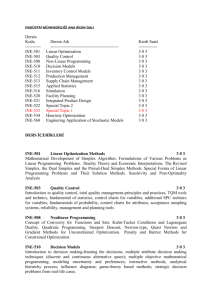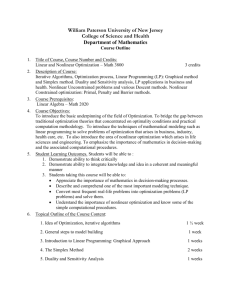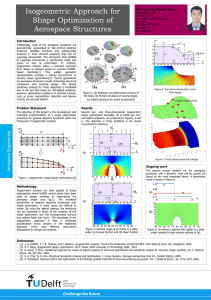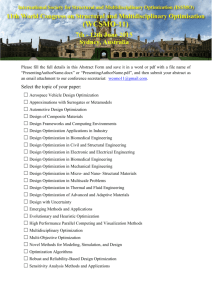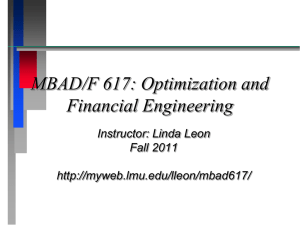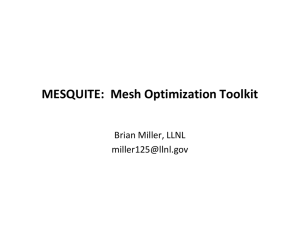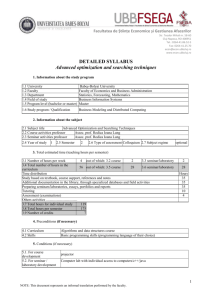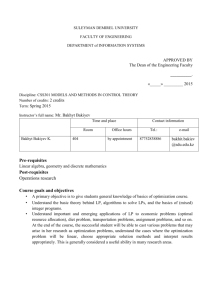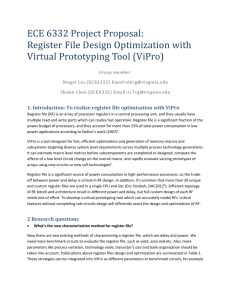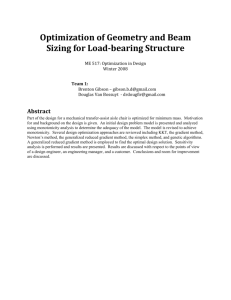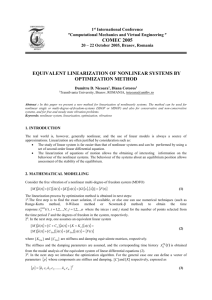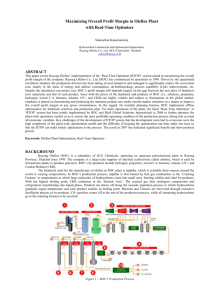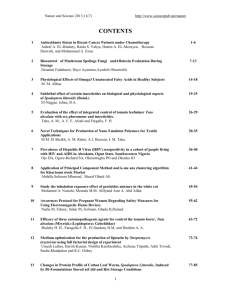TC3001 : Optimization and Linear Programming
advertisement
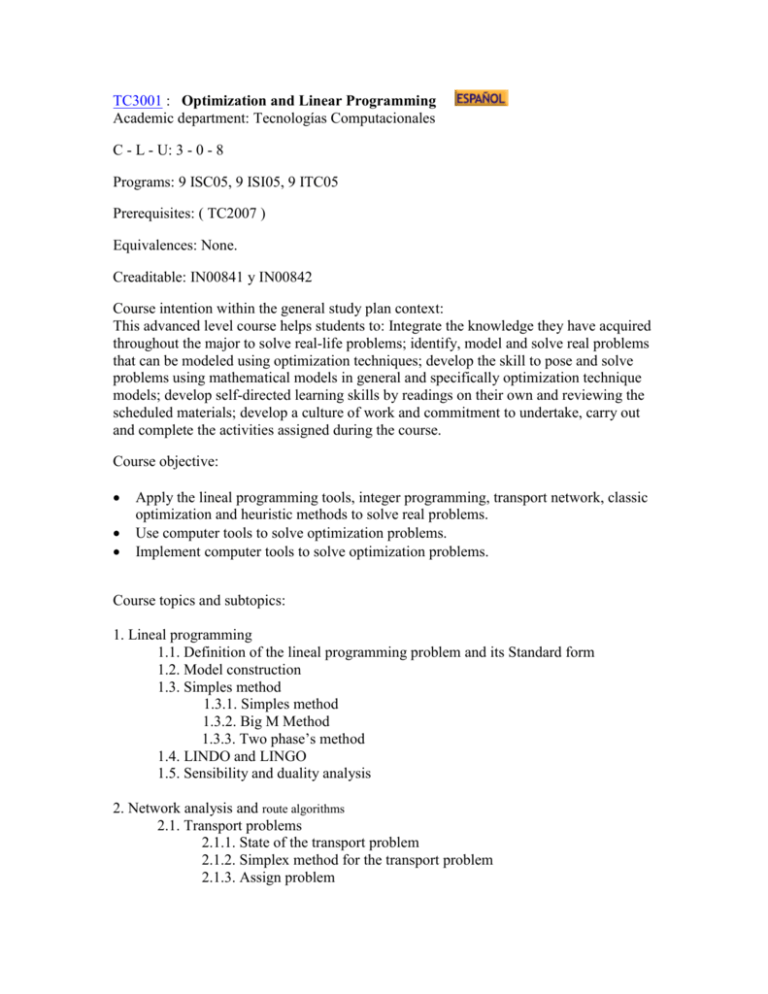
TC3001 : Optimization and Linear Programming Academic department: Tecnologías Computacionales C - L - U: 3 - 0 - 8 Programs: 9 ISC05, 9 ISI05, 9 ITC05 Prerequisites: ( TC2007 ) Equivalences: None. Creaditable: IN00841 y IN00842 Course intention within the general study plan context: This advanced level course helps students to: Integrate the knowledge they have acquired throughout the major to solve real-life problems; identify, model and solve real problems that can be modeled using optimization techniques; develop the skill to pose and solve problems using mathematical models in general and specifically optimization technique models; develop self-directed learning skills by readings on their own and reviewing the scheduled materials; develop a culture of work and commitment to undertake, carry out and complete the activities assigned during the course. Course objective: Apply the lineal programming tools, integer programming, transport network, classic optimization and heuristic methods to solve real problems. Use computer tools to solve optimization problems. Implement computer tools to solve optimization problems. Course topics and subtopics: 1. Lineal programming 1.1. Definition of the lineal programming problem and its Standard form 1.2. Model construction 1.3. Simples method 1.3.1. Simples method 1.3.2. Big M Method 1.3.3. Two phase’s method 1.4. LINDO and LINGO 1.5. Sensibility and duality analysis 2. Network analysis and route algorithms 2.1. Transport problems 2.1.1. State of the transport problem 2.1.2. Simplex method for the transport problem 2.1.3. Assign problem 2.1.4. Algorith for the simplex method applied to transport method 2.2. Network stream 2.2.1. concepts 2.2.2. Maximum stream 2.2.3. CPM and PERT 2.2.4. Uses 2.2.5. Analysis of algorithms for network transport problems 3.Integer programming 3.1. Statement of problems of integer programming 3.2. Delimitation and ramification methods 3.3 Sofware Use 3.3.Uses 4. Non lineal programming 4.1 Classic optimization without restrictions 4.1.1 Gradient of a function 4.1.2 Hessian matrix of a function 4.1.3 Critical points and criteria for relative maximum and minimum 4.2. Classic optimization with restrictions 4.2.1 Lagrange multiplicators 4.2.2 Kuhn-Tucker conditions 4.3 Numeric methods 5. Combining optimization 5.1 Mating 5.1 .1 Mating of maximum cardinality 5.1.2 Mating of maximum weight 5.2 Uses 6. Heuristic programming 6.1. Genetic algorithms 6.1.1. Basic algorithms to develop genetic algorithms 6.2. Simulated annealing 6.3. Neuronal networks Teaching and learning techniques: Problems based learning Bibliography: TEXT BOOKS: * Wayne L. Winston, Munirpallam Venkataramanan, Introduction to mathematical programming, Operations research, 4th edition, Thomson, , , , * Taha, Hamdy A., Investigación de operaciones / Hamdy A. Taha, tr. José de la Cera Alonso., 5a ed., Mexico : Alfaomega, 1995., , , spa, 9701210026 * Winston, Wayne L., Investigación de operaciones : aplicaciones y algoritmos / Wayne L. Winston ; traducción María Bruna Anzures y Francisco Sánchez Fragoso., 4a ed., México : Thomson, c2005., , , spaeng , 9706863621 Academic credentials required to teach the course: · Academic Degrees: Master's degree in Computational Sciences; Doctoral degree in Computational Sciences; Master's degree in Applied Mathematics; Doctoral degree in Applied Mathematics; Master's degree in Operations Investigations; Doctoral degree in Operations Investigations. Abstract, key words: Lineal programming (entire programming, simplex method), Networks analysis and route algorithms, Non lineal optimization, Entire programming, Combinatory programming, Heuristic programming Language of Instruction: Spanish


